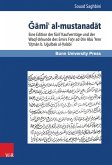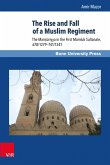In this volume, we try to understand the "Mamluk Empire" not as a confined space but as a region where several nodes of different networks existed side-by-side and at the same time. In our opinion, these networks constitute to a great extent the core of the so-called Mamluk society; they form the basis of the social order. Following, in part, concepts refined in the New Area Studies, recent reflections about the phenomenon of the "Empire - State", trajectories in today's Global History, and the spatial turn in modern historiography, we intend to identify a number of physical and cognitive networks with one or more nodes in Mamluk-controlled territories. In addition to this, one of the most important analytical questions would be to define the role of these networks in Mamluk society.
Dieser Download kann aus rechtlichen Gründen nur mit Rechnungsadresse in A, B, BG, CY, CZ, D, DK, EW, E, FIN, F, GR, H, IRL, I, LT, L, LR, M, NL, PL, P, R, S, SLO, SK ausgeliefert werden.









